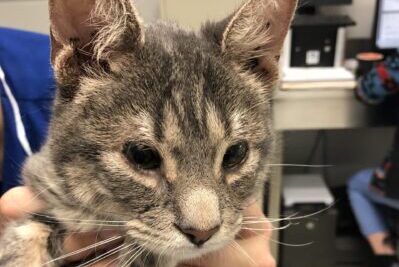Alcohol, Peroxide and Rubber Bands: The Nay List for Pets

Alcohol, Peroxide and Rubber Bands: The Nay List for Pets
The New York Times and my fifteen-year-old have a favorite word – meh. It means neither good nor bad, just meh. Twitter jumped on the ranking bandwagon using #mehlist.
When it comes to medicine, things are more black and white, definitely not meh. This past week I saw patients getting home treatments that were not yea, not meh, in fact in my book, they were nay.
Hydrogen peroxide
Since the first grandmother inhabited the earth, they have been cleaning cuts and scrapes with hydrogen peroxide. It sure looks powerful, bubbling and foaming on your skinned knees. But scientific research has shown hydrogen peroxide blocks healing. This puts hydrogen peroxide on my nay list for pet cuts and scrapes.
Recently, a family with a new puppy, Rolly, frantically called me because their puppy had just vomited. When I asked what Rolly had been doing just prior to vomiting, they explained he had lost a tooth and they were pouring hydrogen peroxide into his mouth to clean the empty tooth socket. Diagnosis made: hydrogen peroxide is commonly used as an emetic agent in dogs.
Rolly swallowed enough of the hydrogen peroxide to cause vomiting. An hour later, he was back to his usual energetic self.
Yea to:
- A veterinarian-approved first aid kit containing an antibacterial solution for cleaning cuts and scrapes.
- Inducing vomiting in your pet only if your veterinarian recommends it.
Rubbing alcohol
Lulu has bad ears, the kind with gooey brown discharge. Her owners decided to use rubbing alcohol to treat the discharge. By the time I saw Lulu, her ears were a red, inflamed mess and she hardly wanted anyone to come near them. Ear canals are very tender tissue and the harsh alcohol further irritates them. Rubbing alcohol is also very drying. When ear canals dry out they are prone to infection and become very itchy, putting alcohol in the ears on my nay list.
Yea to:
- Using an ear cleaning solution formulated for pets, or seeing your veterinarian if your pet has an ear infection.
Rubber bands
In a recent horrific story, rubber bands were cruelly used in home neutering of dogs.
Home neutering is an absolute nay. Can you imagine major surgery without anesthesia, or without post-operative pain control? Home neutering is at the top of my nay list.
Another nay for rubber bands is using them to hold a bandage on your pet’s foot. Just last week, The AMC’s ER saw a dog with swollen front feet from a too tight rubber band holding bandages on the front paws.
Pet families with small children should keep rubber bands hidden away. Too often veterinarians see dogs and cats accidently “rubber banded” around the neck, tail, or paws. Unknowing children playing with the family pet use a rubber band as a collar. The rubber band gets forgotten and soon your pet needs a trip to the animal ER for surgical removal of a painful rubber band.
Yea to:
- Investigating payment options with your family veterinarian or local spay neuter clinics, if neutering time is here and you find yourself in a tight fiscal pinch.
- Bandaging your pet only after your veterinarian has demonstrated proper technique.


































